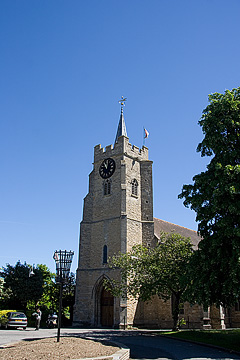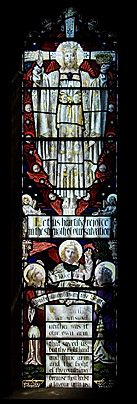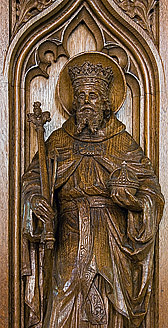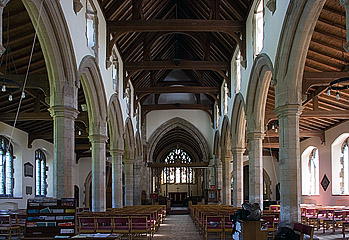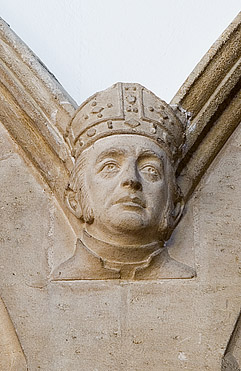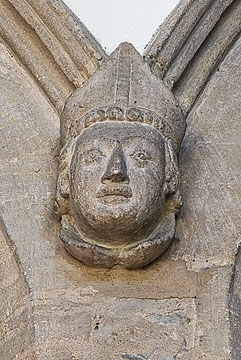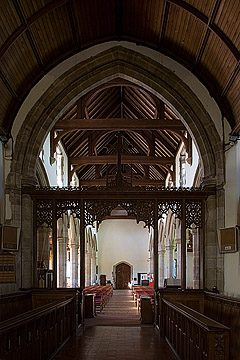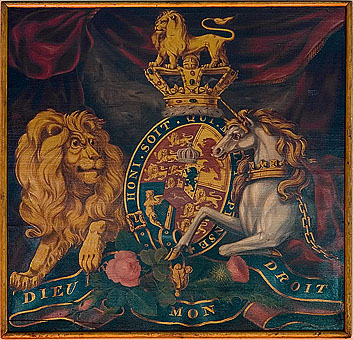This church was mostly rebuilt in 1909-10, which makes it one of the younger churches on this site. The new work is not bad, though, and incorporates remnants of the medieval church in the form of the west tower and the nave arcades, both 14th century.
Entry is through the aforementioned west tower. It's an interesting little thing: not big (Chatteris can't have been rich enough to afford to import the stone to build anything grander) but cheery enough. It has a slightly irregular shape due to a stairway hidden inside the south-east buttress and is surmounted by a clock, a little spire, and a battlemented parapet that comes up into pyramidal pinnacles on the corners.
There is now a wooden doorway in the west face of the tower, but I suspect that the space beneath was once open as a porch. The stonework inside is somewhat weathered, to start with, and there are benches along the north and south walls set into blind arches. There's also a niche above the east door, leading into the church.
Inside, ones first impression is of great breadth. This is partially to do with the modern aisles - which are extremely generously proportioned - but the medieval nave is also unusually wide. It's also long: six bays, with broad arcades. The floor is covered with a great expanse of wooden parquet and has obviously been lowered, since the nave piers now sit on little square podia.
The piers themselves are octagonal, and deeply gnarled: time doesn't treat such soft clunch very kindly. Some medieval dripstops survive above them, and have been supplemented by 20th century ones: the contrast between a medieval bishop and his modern successor in the north arcade was rather nice.
Above them rises the modern clerestory, with windows set inside shouldered arches.
The only other medieval survival is the rood stair, though even this has been recut, by the look of it. The open doorway at the top looks into the big chancel arch, and over an elaborate modern screen, complete with unusual irregular flowing tracery in the openings.
To the south is a contemporary stone pulpit: square, with cut off corners containing niches and statues of kings. This is a bit daft, I'm afraid: I approve of their having a statue of St Edmund in the church, but depicting him as a magnificently bearded patriarch is preposterous given that he died at the tender age of thirty.
Much more satisfactory is the big east window, which acts as the war memorial for the parish. It depicts Christ in the centre surrounded by a host of angels and figures carrying the flags of the Allies, led by France and Britain.
I usually find any implication of religious endorsement for warfare revolting, but I generally make an exception for the Second World War; and the slight overtones of jingoism are muted by the great variety of nations represented. It's a finer war memorial than most I've seen, anyway.
SS Peter and Paul was open when we visited.
